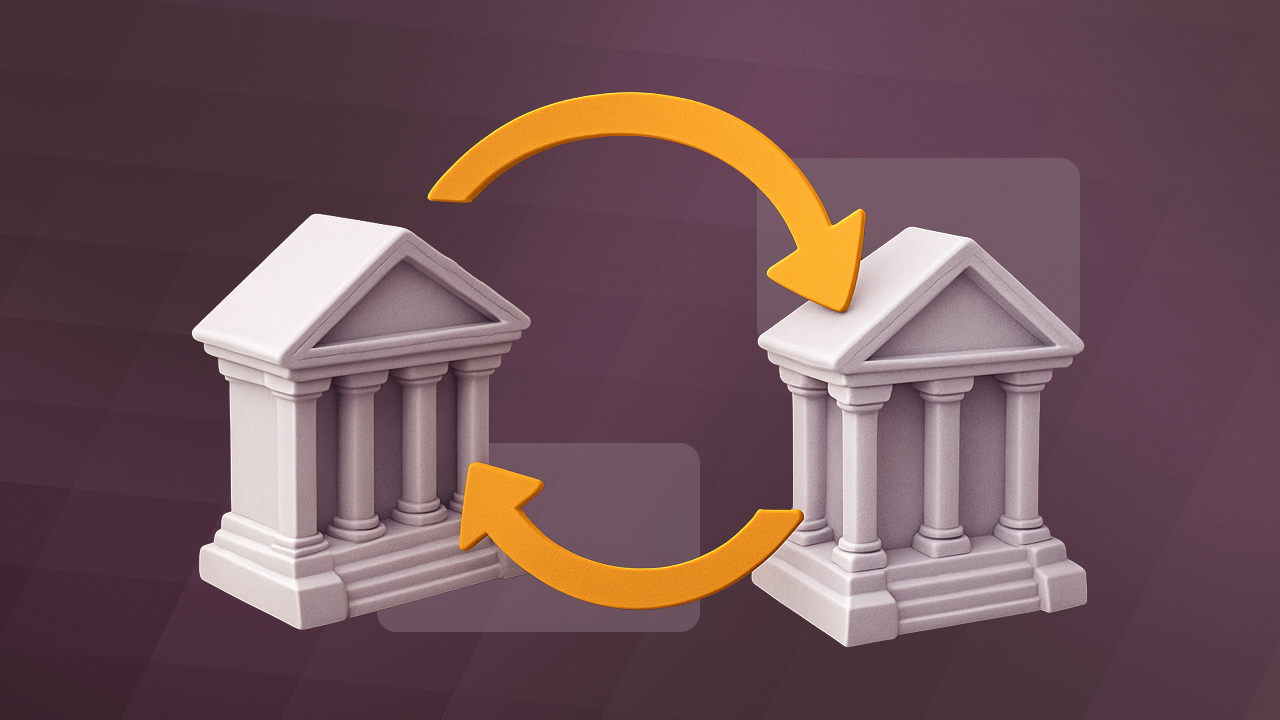ACH transfers are the backbone of modern B2B payments. They’re fast, cheap, and reliable. But there’s one question that catches business owners off guard time and time again: can an ACH payment be reversed?
Short answer? Yes. But the rules are strict, and the consequences of not knowing them can hit hard.
A single reversal on a $30,000 invoice could lock up your cash flow, delay orders, or trigger a scramble to cover payroll. And it doesn’t just happen to amateurs, because seasoned operators get blindsided too. If you're collecting large payments from clients, contractors, or resellers, you need to know exactly what scenarios can trigger a reversal and how long you have to respond.
This guide discusses the legal grounds for ACH reversals, what banks actually allow, and how to protect your business from getting burned. Let’s get into it.
Key Takeaways
- ACH reversals are possible and must be initiated by the originating bank or sender, not the recipient.
- ACH reversals are only allowed for specific reasons, including duplicate payments, wrong recipients, or fraud.
- Requests must be submitted within five business days of settlement, with no formal process available after the deadline.
- Reversals differ from ACH returns, which happen before funds settle due to issues like insufficient funds or closed accounts.
- A single ACH reversal can disrupt cash flow, delay orders, and impact banking relationships.
- Modern platforms like Nickel provide real-time tracking, reversal alerts, and better fraud detection.
- Protect your business from ACH reversals with Nickel’s free, unlimited ACH transfers and built-in payment controls.
ACH Payment Reversals: The Basics
ACH payment reversals fall into a few key categories, each with strict rules and short response windows. The Automated Clearing House network, regulated by NACHA operating rules, outlines exactly when and how a financial institution can reverse or return a transaction.
ACH reversals move fast. Unlike credit card chargebacks, which can drag on for months, ACH disputes typically surface within days. That speed has benefits, mainly that it keeps your books clean, but it also means you need to act immediately when something goes wrong.
This urgency hits especially hard in the physical economy. If you’re in construction, distribution, or manufacturing, you’re often shipping materials or starting work before funds settle.
A reversal after delivery can punch a hole in your cash flow, delay vendor payments, or derail payroll. These aren’t hypothetical risks. They’re real financial liabilities that can compound if not addressed early.
The Six Main Types of ACH Reversals
ACH reversals are rare and tightly regulated. Under NACHA rules, only the originating party or the originating bank can initiate a reversal. The recipient of funds, such as a business receiving a customer’s payment, generally cannot reverse the transaction themselves, even if the funds were received in error.
Reversals must be initiated quickly, usually within five business days of settlement, and are only allowed under specific conditions.
Here are the legitimate reasons an ACH reversal may be processed:
Duplicate Payment
If the same transaction is sent more than once, the sender can request a reversal to recover the unintended duplicate. For example, if a payroll batch runs twice due to a system error, the bank can reverse the extra transaction. This is one of the most common reversal scenarios.
Incorrect Recipient
ACH reversals can be used to retrieve funds sent to the wrong account. This typically occurs when incorrect banking details are entered, such as a typo in the account number. As long as the request is made promptly and fits NACHA’s criteria, the originating bank can issue a reversal to correct the error.
Incorrect Payment Amount
If the payment amount is inaccurate, either over or under the intended amount, a reversal may be allowed. This usually applies to gross overpayments caused by data entry issues or batch errors. Small discrepancies may not qualify, but significant mistakes can be corrected through a formal reversal.
Wrong Effective Date
When a payment is processed on the wrong date due to a system issue or misconfigured file, it may qualify for reversal. The most common examples involve early debits or credits that violate agreed-upon timing, potentially disrupting cash flow or triggering other complications.
Technical Errors
System-level problems such as corrupted files, misconfigured integrations, or transmission errors can result in unauthorized or erroneous ACH entries. These mistakes often affect entire batches or multiple recipients. Banks can reverse these transactions, but only when the error meets NACHA’s specific definition of a technical issue.
Fraud or Unauthorized Debit
If an ACH debit was initiated without proper authorization, such as a fraudulent transaction or compromised account, the sender can request a reversal.
In consumer accounts, this is protected under Regulation E, which allows up to 60 days for the account holder to dispute the charge. In a business context, the window is much shorter and the process is more restrictive.
Each of these reversal types is subject to strict documentation requirements. In most cases, the originating bank must certify that the reversal falls within the allowable categories and submit the request within NACHA’s time limits.
ACH Reversals vs. ACH Returns
ACH reversals are different from ACH returns. A return happens when a transaction is rejected or bounced back before settlement, generally due to insufficient funds, a closed account, or invalid credentials. An ACH reversal, on the other hand, happens after a transaction has already settled. This makes it more serious and time-sensitive.
Real-World Impact on Your Business
Consider a concrete example from Nickel’s target market: a wholesale building supply company receives a $75,000 ACH payment for a lumber delivery.
The payment clears, and the materials are released to the contractor the same day. Three weeks later, the customer’s bookkeeper flags the transaction as unauthorized and requests a reversal.
Now the supplier is stuck. The product is gone, the cash has likely been used to pay vendors or staff, and the reversal forces an immediate liquidity crunch. This is a serious financial setback that can affect credit terms, vendor relationships, and payroll.
For accountants and bookkeepers, reversals also create operational headaches. You’re now correcting records, dealing with unsettled invoices, and absorbing the cost of time lost to manual cleanup.
ACH reversals don't just hit your bank balance. They disrupt your business.
How Long Do You Have to Reverse an ACH Payment?
ACH reversals are strictly limited and must be initiated by the originating bank, typically on behalf of the sender. The recipient generally cannot reverse a payment once it’s received, unless the funds were pulled from their account without proper authorization.
Reversals are only allowed under specific conditions, such as duplicate payments, incorrect amounts, wrong recipients, or technical errors. NACHA rules require that these be submitted within five banking days of the original settlement date.
If that window passes, the sender must work directly with the recipient and their bank to recover funds. No formal reversal process applies after the deadline.
Timing Rules for ACH Reversals
- Senders: Must request a reversal within 5 business days of settlement
- Consumers Disputing Unauthorized Debits: Up to 60 days from the date of the bank statement under Regulation E
- Banks: May reverse transactions due to errors or system failures, again within the 5-day limit
After five days, the ACH system no longer allows automated reversals. Any corrections after that point must be handled manually or through legal resolution. Find out more about stopping ACH payments here.
Prevention Strategies for High-Volume Businesses
Businesses processing large ACH volumes can’t afford to play defense. Preventing reversals is the smarter play. Here are the key strategies used by companies that move serious money through invoice-based payments.
Verify Customer Information Thoroughly
Before processing high-value ACH transfers, confirm all bank details using micro-deposits or third-party account verification services. A single typo in the routing or account number can lead to costly errors that may not be reversible.
Document Authorization Clearly
For ACH debits, you must have proof of authorization. Keep signed agreements, timestamped digital acceptance records, or recorded phone approvals on file. Without clear evidence, disputed transactions often result in automatic reversals under Federal Reserve and NACHA guidelines.
Monitor Settlement Patterns
Watch how long each customer’s ACH payments usually take to settle. If a client’s payments start arriving later than usual or consistently fail to clear on time, it could signal issues with their account or internal payment process.
Set Internal Risk Thresholds
Many B2B businesses enforce internal rules for new customers or high-ticket orders. For example, withhold shipping or service delivery until the ACH payment has cleared for at least five business days. This minimizes exposure to last-minute reversals on large payments.
Use ACH Credits Instead of Debits
Whenever possible, have customers push payments to you via ACH credit rather than pulling funds through a debit. This reduces the risk of unauthorized transaction claims and puts more control in your hands.
The Hidden Costs of ACH Reversals
The lost payment is only the beginning. ACH reversals come with a range of hidden costs that can eat into your margins.
Bank Fees
Most financial institutions charge $25 to $50 per reversal. These fees apply regardless of who caused the error or how it was resolved.
Processor Penalties
If you use an ACH processing service, expect added costs. Many charge manual handling fees or escalate you to a higher pricing tier if reversal volume increases. Some also pause or delay future transfers while investigating disputes.
Strained Bank Relationships
Excessive reversals can raise red flags with your bank. High reversal rates may result in increased scrutiny, delayed settlement times, or in extreme cases, account termination.
Banks view frequent reversals as operational risk, and they respond accordingly.
Staying ahead of ACH reversals means playing smart from the start. Small operational checks today can protect six-figure transfers tomorrow.
How Modern Payment Platforms Handle ACH Reversals
Traditional banking portals often fall short when it comes to ACH reversals. They offer limited detail, delayed notifications, and little clarity on what went wrong. That leaves businesses guessing and reacting too late.
Modern B2B payment platforms like Nickel offer a more transparent and proactive experience. With real-time tracking, detailed reversal reason codes, and instant alerts, you know exactly when a problem occurs and why.
This visibility helps you respond quickly, notify clients, and update internal records without scrambling through outdated bank interfaces.
Many platforms also include risk detection tools that flag suspicious or unusual transactions before they settle. While this adds a small delay to processing, it can stop large errors or fraud from reaching your account in the first place.
Integrated platforms like Nickel help prevent problems before they impact your bottom line - book a demo today.
Legal and Regulatory Considerations
ACH reversals are not just operational headaches. They fall under a strict set of federal rules and banking regulations. For consumer transactions, the Electronic Fund Transfer Act (EFTA) protects account holders from unauthorized debits.
Businesses processing consumer payments must comply with these rules, including timely reversal responses and clear authorization procedures.
For B2B payments, the rules are different. Commercial accounts are not covered by EFTA, and banks are less likely to reverse payments without a formal error or fraud claim. That said, NACHA’s operating rules still apply, especially around authorization and timing.
In both cases, documentation is non-negotiable. Businesses must maintain clear records of payment authorization, communication history, and transaction data. Without this, a single reversal can lead to disputes, audits, or lost claims, especially when large transfers are involved.
Clear records protect your business when compliance questions arise. Keep everything organized, especially when handling recurring payments or large transactions.
Best Practices for Managing ACH Payment Risk
Top-performing businesses don’t leave ACH payment risk to chance. They build structured, repeatable systems to prevent issues before they happen. These strategies are essential for businesses handling high volumes of ACH transfers.
Create Written ACH Policies
Start with clear, written procedures. Outline how your business accepts ACH payments, verifies account details, and handles reversal disputes. Make these policies part of employee training and review them quarterly. Small process gaps can lead to major cash flow problems.
Monitor Industry Rules and Fraud Trends
Stay informed on updates to NACHA regulations, fraud tactics, and banking policy changes. ACH rules continue to evolve, and what worked last quarter might not meet today’s standards. Set time each month to review industry alerts or regulatory guidance that may impact your ACH risk exposure.
Build a Strong Relationship with Your Bank
Don’t treat your bank like a vendor. Keep your banker informed about your ACH volume, reversal history, and cash flow cycles. When issues arise, a bank that understands your business is more likely to help resolve disputes quickly or grant exceptions when needed.
Bring in Experts When Needed
If you’re moving millions each month through ACH, hire support. Payments attorneys, ACH compliance specialists, or industry-savvy accountants can help tighten your processes, reduce reversal risk, and keep your policies aligned with legal and financial standards.
The Future of ACH Payment Security
ACH processing is getting faster and smarter. Same-day ACH has shortened the time to detect and fix errors. New verification tools are reducing fraud, and banks are investing in more secure authentication protocols.
But faster doesn’t always mean safer. The risk of ACH reversals still exists, especially for businesses that process large, high-stakes payments. Errors, fraud, and unauthorized debits can still disrupt cash flow and customer relationships.
For companies in Nickel’s core markets, including wholesale distribution, construction, and manufacturing, ACH offers huge efficiency gains over checks. It’s faster, cheaper, and easier to manage. But those gains only materialize when businesses understand the risks and put the right guardrails in place.
Security isn’t just a feature. It’s a process. Make it part of how your business handles payments, and you’ll protect more than just your balance sheet. You'll protect your reputation.
Take advantage of free and unlimited ACH transfers - get started with Nickel.
Take Control of Your ACH Payment Risk
ACH reversals are rare, but when they happen, they hit hard. One mistake can freeze cash flow, strain supplier relationships, and leave your team untangling a mess that could have been avoided. The rules are strict, the timelines are short, and the burden is on the business to act fast, or better yet, prevent the issue entirely.
That’s why smart companies don’t rely on outdated banking tools or manual processes. They implement verification steps, document everything, and use platforms that flag problems before money moves. Reversals aren’t just a compliance issue. They’re a financial risk that grows with every zero on the invoice.
If your business moves large B2B payments through ACH, you need speed, transparency, and control. With real-time alerts, unlimited transfers, and zero fees, Nickel gives you all three.
Explore Nickel's payment solutions designed specifically for companies processing large B2B transactions, or get started with a free account to see how modern payment platforms can reduce your reversal risk while eliminating transaction fees.
Frequently Asked Questions
Can a Bank Reverse an ACH Payment After It’s Been Deposited?
Yes, banks can reverse ACH payments even after they've been deposited into your account. The specific timeframe depends on the reason for the reversal.
How Long Do You Have to Reverse a Same-Day ACH Payment You Sent by Mistake?
You typically have until 6:00 PM ET on the same business day for same-day recalls, or until 8:30 AM ET the following business day for next-day recalls. After these windows, you'll need cooperation from the receiving bank.
Can You Reverse an ACH Payment for Any Reason?
No, ACH payments can only be reversed for specific reasons outlined in NACHA operating rules: unauthorized transactions, errors, insufficient funds, account closures, or technical problems. You cannot reverse a payment simply because you changed your mind.
What Happens if an ACH Payment Is Reversed After I’ve Shipped Products?
If an ACH payment is reversed after you've delivered goods or services, you'll need to pursue collection through normal business channels. The reversal doesn't automatically entitle you to return of the products, but you may have legal remedies depending on your sales terms and local laws.
How Can I Prevent ACH Payment Reversals?
Prevent reversals by verifying customer bank account information, maintaining proper authorization documentation, monitoring settlement patterns, and using ACH credits rather than debits when possible. Consider implementing waiting periods for large transactions from new customers.
Sources
Don't miss these articles
Make every Nickel count
Join 10,000+ businesses paying and getting paid on Nickel






